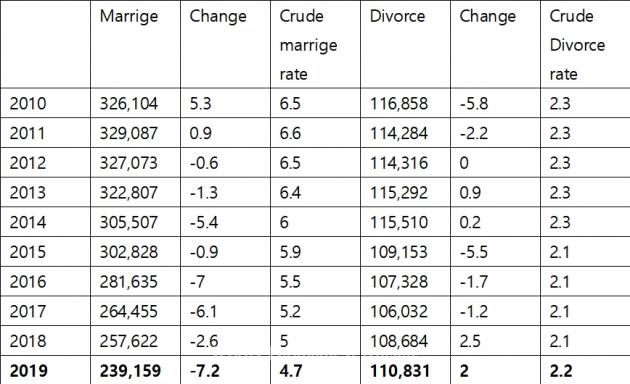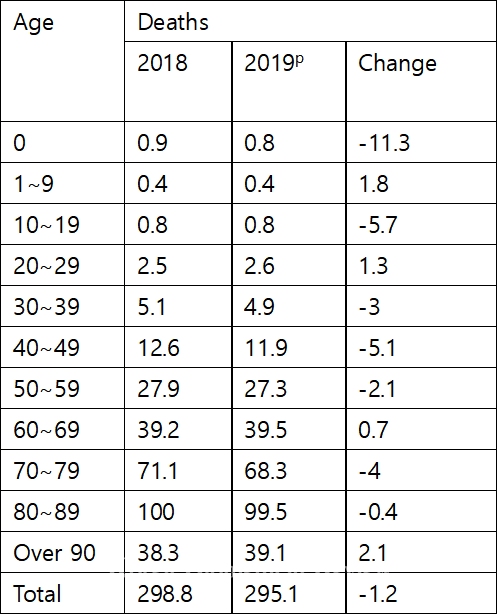The number of childbirths and marriages hit new lows in 2019, despite the government’s continuous efforts to address these problems.
According to the 2019 Social Indicators report released by Statistics Korea on Thursday, Korea’s total fertility rate, the average number of children one woman bears in her lifetime, dipped down to 0.92 last year from 0.98 in 2018. The rate has been falling every year since 2015 and stayed below 1 for two consecutive years.
Women in their early 30s showed the highest birthrate, giving birth to 86.3 babies per 1,000 people, followed by those in their late 30s (45) and those in the late 20s (35.7). The birthrate among women in their late 20s recorded the steepest drop of 5.3 babies per 1,000 people.
Total fertility rate by year
(Unit: Number of babies per one fertile woman, number of babies per 1,000 women of age group, percent)

(Source: Statistics Korea)
In a 2018 survey, meanwhile, seven out of 10 Koreans said that they need children after marriage.
The survey showed that more men wanted babies (72.6 percent) than women (66.6 percent). Want of babies was lower among younger and more educated respondents.
Total marriage and divorce number by year (Unit: number, %, number per 1,000 people)

(Source: Statistics Korea)
The number of new marriages in 2019 fell to an all-time low of 239,159, as did the birthrate. It was 7.2 percent lower from 2018, while the number of divorces recorded an all-time high of 110,831, a 2 percent increase from the same period.
Number of Deaths by age group (Unit: 1,000 people, %)

(Source: Statistics Korea)
The number of deaths in 2019 came to 295,100, down 1.2 percent from 2018. As a result, the country’s natural increase rate, which is the difference between the numbers of births and deaths in a population, rose slightly by 0.2 percent.
The mortality rates for the 1 to 9-year-olds and the 20 to 29-year-olds increased by 4.6 and 1.3 percent, respectively, compared to the previous year. However, the number of total deaths ultimately decreased in 2019 as the mortality rate for other age groups decreased compared to 2018.

